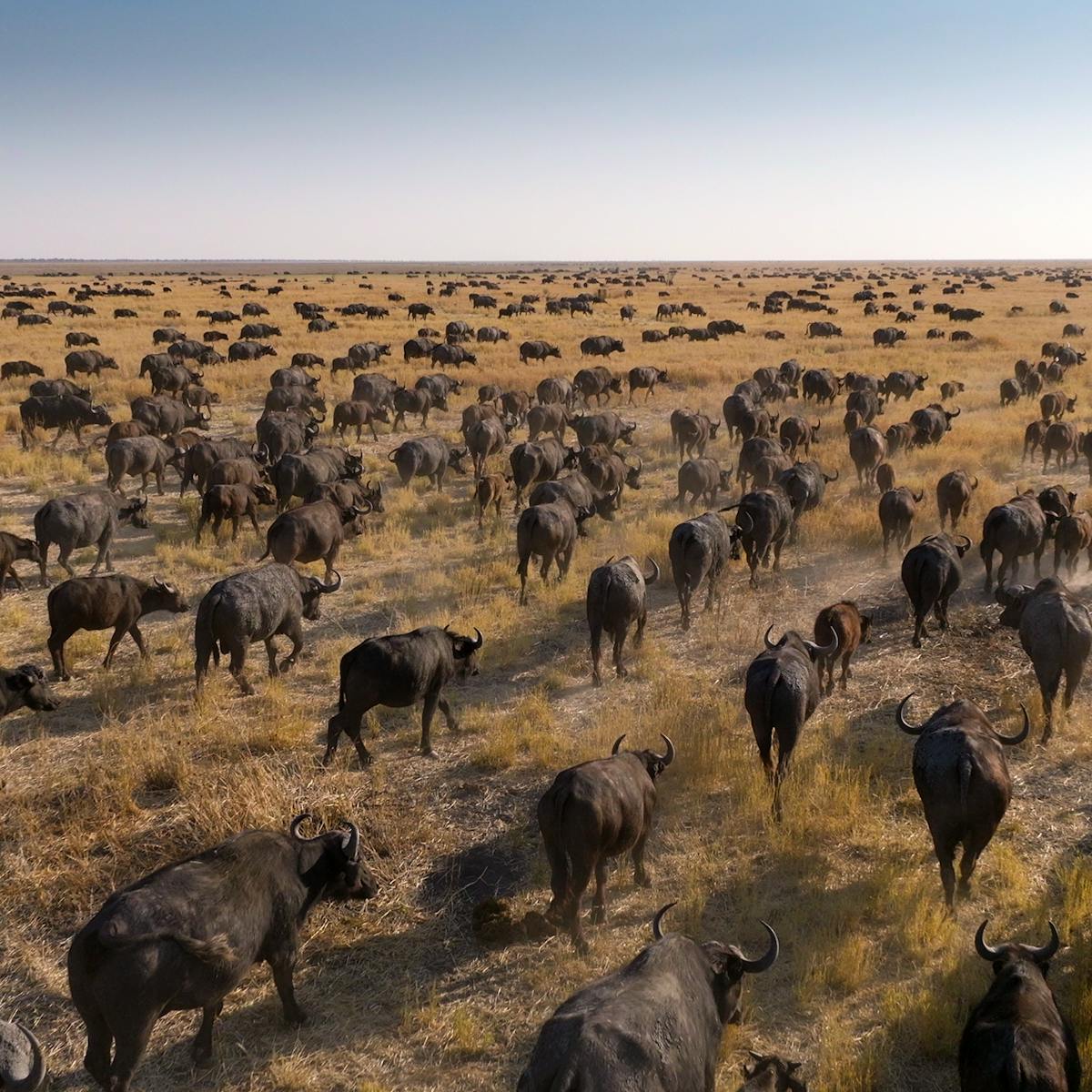Dan Tapster, Keith Scholey, and Alastair Fothergill tell the story of life on Earth as it has never been seen before.
There are more planets in the universe than grains of sand on Earth, yet only one, to our knowledge, fosters life. Its four-billion-year-long lineage is the subject of Dan Tapster, Keith Scholey, and Alastair Fothergill’s latest epic series, aptly named Life on Our Planet.
Not since BBC newscaster Sir David Attenborough (whose 30-year relationship with Scholey and Fothergill includes Our Planet and David Attenborough: A Life on Our Planet) created Life on Earth in 1979 has the daunting subject been explored onscreen. Since then, advances in technology and science have exploded storytelling capabilities. “We know more about the ancient world than ever before. It’s all there, just waiting to be told!” Tapster says. Fothergill adds, “Nobody I know of has combined C.G.I. and natural history in this way before; it’s really mold-breaking.”
With the help of leading visual effects artists at Industrial Light & Magic, Life on Our Planet brought billions of years’ worth of creatures to life with an inimitable level of accuracy and precision. “Every single [V.F.X.] creature — of which there are around 65 — had to be thoroughly researched so that we could provide ILM with every possible detail,” Tapster says. “Each asset had a ‘fact file,’ which usually ran to around 60 pages.” The extent of research was unprecedented for the V.F.X. specialists as well: “For ILM, this was the longest project I think they’ve worked on because of the level of perfection we were all so keen to bring to every frame of every scene,” Scholey says.
Life on Our Planet’s beating heart is the narrative of the five — and soon-to-be six — mass extinctions, which the master storytellers at Steven Spielberg’s production arm Amblin Television helped guide. “To have the chance to tell the greatest story of all — the story of how life originated, then evolved, then was destroyed only to go on again — was too good to resist,” Tapster says. “I could see early on that we could make this a binge-worthy series, with drama, enticing starts, and edge-of-your-seat cliffhangers.”
By engaging viewers with affecting cinematic storytelling about the calamitous destruction of the past, the series sheds dire light on today’s climate crisis. “The sixth mass extinction that we’re currently living through is the first one created by an animal and the first one that can be averted completely,” says Scholey. Equal parts technical feat, call to action, and majestic portrait of our singular world, Life on Our Planet is an urgent and moving watch for all.
Here are only a few of the mind-boggling numbers behind Life on Our Planet’s audacious undertaking.
1,781
days spent in the field, across 45 countries
500
species, C.G.I. and real, featured throughout the series
440
people — animators, field assistants, technicians, scientists — who helped make the series
6
years to bring the series to the screen

6
continents visited during production
2,181
hours of footage shot
65
instruments in the score’s orchestra
217
filming trips




